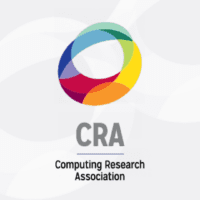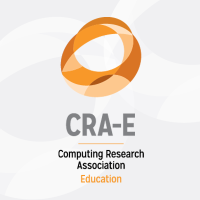Computer and Information Science and Engineering Graduate Fellowships (CSGrad4US)
By Margaret Martonosi (Princeton University), Jill Denner (NSF), and Jeff Forbes (NSF)
In 2022, 100,699 students in the U.S. completed bachelor’s degrees in computer science, computer engineering and information science at a public or not-for-profit institution. Eighty nine percent of these students were U.S. citizens or permanent residents according to the National Center for Education Statistics. Concurrently, within the same topic area, 1,935 doctoral degrees were completed in the US, yet only 34% of these recipients were US citizens or permanent residents. This trend is also evident in statistics indicating that 75% of Ph.D. applicants and 65% of new Ph.D. enrollees in the 2022-23 year were international students (2022-Taulbee-Survey-Final.pdf (cra.org)). These numbers raise important questions like: What paths are bachelor’s degree recipients pursuing? What factors are contributing to the limited number of US and permanent resident applicants to doctoral programs, whether immediately following their undergraduate studies or later in their careers?
The report, Growing and Diversifying the Domestic Graduate Pipeline (nsf.gov), published by the U.S. National Science Foundation (NSF) in 2021, examined research and data, and highlighted the challenges and opportunities observed in these trends. A significant finding is consistent with the data above–despite the large number of undergraduate degrees attained, the number of doctoral students in fields supported by NSF’s Computer and Information Science and Engineering (CISE) directorate has not increased. Some factors driving this pattern include the financial incentives from industry jobs and lack of awareness about doctoral pathways. Moreover, once graduates have entered the workforce, the path to a graduate degree becomes less straightforward. Many lose contact with faculty advisors who could encourage, guide, and write letters of recommendation for their application.
NSF is an independent federal agency dedicated to advancing the progress of science. A key part of its mission is to invest in efforts that build a diverse next-generation workforce encompassing scientists, engineers, technicians, and educators. In pursuit of this objective, NSF has funded research and education initiatives that have shown the importance of mentors, cohort models and fellowships for students pursuing and completing doctoral programs. However, while these strategies have led to students transitioning directly from undergraduate to graduate schools, there is a lack of programs designed to assist and incentivize students who work in industry to return to academics and pursue a doctoral degree in a CISE-supported field.
The CSGrad4US Fellowship Program
In 2020, the CISE directorate established the Computer and Information Science and Engineering Graduate (CSGrad4US) Fellowships program. The goal is to increase the number and diversity of domestic graduate students pursuing careers in computer and information science and engineering fields, by facilitating pathways for aspiring doctoral students to return to graduate education after spending time in the workforce. CSGrad4US offers three years of tuition and stipend support, similar to the highly successful NSF Graduate Research Fellowships program (GRFP), but with the added requirement that CSGrad4US applicants must be not currently enrolled in a degree granting program. The program is also unique in its inclusion of a year of mentoring before the fellowship begins, where fellowship recipients are advised on graduate applications and strategies for their success in doctoral schools. The program is part of CISE’s efforts to build pathways to the computing workforce and broaden participation in computing Broadening Participation in Computing – Directorate for Computer and Information Science and Engineering (CISE) | NSF – National Science Foundation Expanding the Pipeline: Roadmap of CISE’s Efforts to Broaden Participation in Computing Through the Years – CRN (cra.org).
Applications to the program are accepted each spring. To be eligible, applicants must be a U.S. citizen, national or permanent resident, intend to apply for full-time enrollment in a research-based doctoral degree program in a CISE field within two years, have graduated with a bachelor’s degree before December 31 of the previous year, and demonstrate CISE core competency CISE Graduate Fellowships – Directorate for Computer and Information Science and Engineering (CISE) | NSF – National Science Foundation. Applications include personal statements about their interests and background and are reviewed by a committee. Those who are selected are invited to participate in the cohort-based mentoring program where mentors and coaches help the fellows identify graduate programs, find a research mentor, and apply to graduate programs. Once enrolled in a qualifying program, fellows can receive funding each year for three years at a rate that is equivalent to the GRFP rate.
Who are CSGrad4US Fellows?
Since 2021, 165 fellows have participated in the CSGrad4US mentoring program—153 completed it. There are currently 68 fellows enrolled in a Ph.D. program and 11 who were offered admission and have deferred. Of those who enrolled, 46% identify as women and 50% are from a group that is underrepresented in computing.
Perspectives of Fellows and Mentors
Fellows describe a number of reasons for applying to the CSGrad4US fellowship program. Many of these reasons had to do with the mentoring component. Some found that being away from an academic institution for a while meant they had lost touch with the people who could guide them on how to find and apply for a PhD. Others said they had been thinking about applying to graduate school and saw this fellowship as a way to kickstart the process. Some expressed the belief that getting a prestigious fellowship from NSF would make them more competitive in their applications. The fellows agreed that CSGrad4US provides a unique opportunity for those in the workforce to get the support and guidance they need to return to school. The specific benefits included help with figuring out which programs to apply to, identify who was in the field they were interested in, and how to put together a strong application.
Faculty members who served as coaches have also described the value of the program for the fellows and themselves. They talked about how the program helps to demystify graduate school and reduce disparities in who applies to graduate school. Some have worked in industry and see the benefits of having more industry professionals with advanced degrees and research skills. They viewed the CSGrad4US program as a way to help people move from thinking about returning to graduate school to actually doing it. The coaches talked about being inspired by the fellows and appreciating working within the infrastructure of the program to provide guidance on their education pathway. Overall, they described how much they enjoyed working with the fellows and how much they learned from being a coach.
Takeaways
There are several important takeaways from our experience to date. First, it is clear that new strategies are needed to recruit a diverse set of applicants, and in particular, large pools of possible applicants are in industry workplaces and not currently in school. Most outreach about fellowships and graduate school programs focuses on enrolled students and faculty members. However, reaching potential fellows outside of the university setting requires a different approach. Strategies include leveraging social media to reach professionals who are ready to think about going to graduate school in a CISE field. They also include working with industry to convey the value of allowing their employees to take time off to pursue a Ph.D. (Addressing the National Need for Increasing the Domestic PhD Yield in Computer Science (cra.org)). Faculty and department chairs can also play a role by encouraging people to apply to CSGrad4US, including their former students and prospective students who are working but have reached out to them about opportunities to join their research lab.
Fellows who enroll in a full time Ph.D. program after returning from the workforce may need additional support. Despite the valuable expertise gained in industry, they may lack familiarity with the latest instructional and assessment systems. Compared to traditional doctoral students, they are more likely to have family responsibilities to balance alongside their studies. Advisors play a critical role in supporting doctoral students to persist in computing fields. Similarly, fostering a sense of community among students through cohort programs and facilitating connections among peers with shared experiences and interests are beneficial practices.
In summary, the NSF CSGrad4US fellowship program aims to increase the number of domestic students who pursue a Ph.D. degree in a computing field by encouraging and guiding students employed by industry to return to academia. By providing financial and informational support, the program is filling a critical gap for those who are in the workforce and interested in returning to school. But we need your help to spread the word! Applications are due May 31, 2024. Please forward this article and encourage former students to apply to CSGrad4US. Find out which of the doctoral students in your department are CSGrad4US fellows and ask them about their experience returning from the workforce.
The CSGrad4US Fellowship Program is being managed by CRA. For resources, details about applying, and contact information please visit: CSGrad4US – CRA
Get to know some of the current CSGrad4US fellows in the following article: Get To Know CSGrad4US









